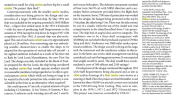Riain
Banned
My head juggles a bit now - 1st it carried two, now it carried no missiles?
With Spey, it will be no more a slug than MiG-23 carrying two R-23s and 4 R-60s, let alone more of a slug than Mirage F1 with it's missile arsenal.
What carried 2 then no missiles? The OTL F8 or the proposed Twosader? We're heading down into proposal land, but there is some basis in reality to make judgements.
The F8E had 4 hardpoints for pylons: the fuselage pylons which in the USN carried 2 AIM9s in a 'Y' adapter and in the MN carried a single R530. The F8E also had a single pylon under each wing inboard of the fold, which carried drop tanks and even in USMC service bombs on occasion. However you don't often see pictures of F8s on carriers with drop tanks or bombs, they generally flew with only the fuselage pylons loaded.
A single F8E was modified into a 2 seat trainer, but never put into production. Apparently there was a proposal to fit 2 seater crusader with Speys for the RN, although I don't know how serious this proposal was and when exactly it was made but I'd suggest it was very near the end of the F8s eight year production run. The RN wanted their carrier fighter to have 4 Red Tops, and even the Red Top weighed double what an AIM9 weighed I presume only 1 would be mounted on each fuselage pylon like the French with the R530. The other pair of Red Tops would have to be mounted under the wings, there is no other place for them and being so heavy might overload the aircraft when landing back on with them. (the F14 Tomcat couldn't land on with 6 Phoenix, which is why you see them with Sparrows)
The F8, even with the Spey installed, can't be fairly compared with the Mirage F1. The Crusader was a mid 50s transonic, gun-armed fighter in the class of the F100, Super Mystere and Mig 19, it's top speed (as a marker of performance) was Mach 1.7 or so. Over the years a bigger radar was fitted as were AIM9/R530 missiles, but there is no escaping it's mid 50s transonic gunfighter roots. Lloading it with 4 heavy AAMs as stated by the RN will drastically cut into already substandard for 1964 performance despite the Spey engine. The F1 is some 15 years newer, the benefit of years of mach 2 experience with the Mirage III, IV bomber and 5 and subsequently can do considerably more with considerably less. For example the F1 weighs 1000lbs less empty than the Crusader yet has a MTOW 1000lbs greater and can fly about 15% faster despite having about 15% less power.
